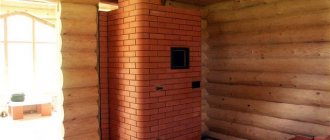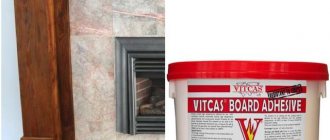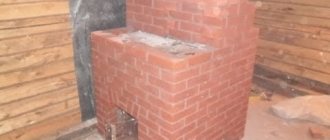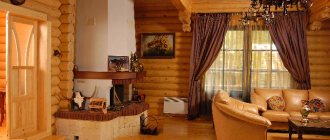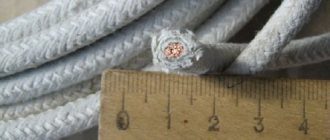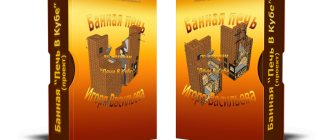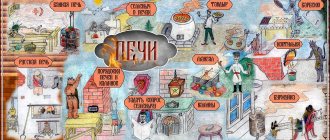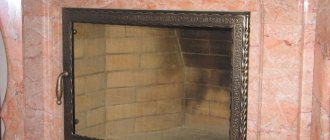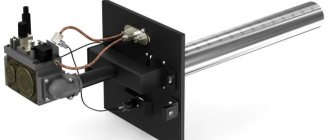The placement of stoves or fireplaces in the house creates pleasant warmth in the required quantity. The owners heat the house when they want and as much as they want; are not subject to the whims of district heating suppliers. Comfort is possible if safety rules are followed.
Peace of mind is guaranteed by the fire-resistant sheet materials enclosing the stove. The most intense combustion of fuel will not cause overheating of adjacent structures. The fireplace will warm the premises without causing fires.
Fire-resistant sheet materials for stove and fireplace protective screens
Protective screens made of steel sheets are mostly used for metal combustion products to insulate their side walls. They are installed at a distance of up to 5 cm from the walls of the heating device and reduce thermal radiation.
Screens can be side or front. With their help, the temperature on the outer surfaces of combustion systems is reduced to +100 °C, which improves fire safety. Installation of convenient protective screens is simple and is carried out by attaching them to the floor using special legs.
Side protective screen
Tips for choosing
For finishing the foundation in country houses, it is recommended to choose non-mineral insulation (foam glass), and for roofing and facades - basalt materials (mineral wool).
When purchasing, you need to read the information on the label . All characteristics of the panels should be described there.
Roofing materials can only be considered truly reliable when, in addition to good performance characteristics (strength and durability), they have a high level of fire safety.
When choosing, you can seek help from a consultant . It is necessary to carefully check the product to ensure there are no cracks or other damage. The packaging must be sealed. The price depends on the company, type of material, its composition and degree of fire resistance.
Reflective trim
It is effective to use cladding consisting of fire-resistant sheets in combination with non-flammable thermal insulation composites.
Fire-resistant sheet materials are mounted on top of thermal insulation; it is preferable to use stainless steel sheets for such cladding, since galvanized steel sheets can release toxic substances into the air when heated. To make the protection more effective, the steel sheet is polished to a mirror finish: this way, heat rays are reflected better from the metal, and the wall heats up even less.
Wall cladding with mineralite slabs
There is a whole range of OLM for cladding:
- basalt cardboard, made of basalt fiber, provides good heat and sound insulation;
- asbestos cardboard is durable and strong;
- mineralite; protective screens for stoves and fireplaces are also made from its sheets.
Advantages of non-combustible panels
The main advantage of non-combustible materials is their fire resistance.
In addition, fireproof materials have the following advantages :
- They do not emit toxic or hazardous substances.
- They are made from inorganic raw materials, do not absorb moisture, do not mold, or rot.
- They have a special fire-resistant impregnation.
- Strong, dense, durable. Capable of withstanding heavy loads.
- Universal. Suitable for interior and exterior decoration, for residential and non-residential premises. Can be used for walls, floors, ceilings, roofs, foundations.
- Panels are produced with an external decorative layer, due to which no additional finishing is required. Stores offer a large selection of colors, sizes and textures.
- Non-combustible slabs can serve as additional sound insulation and insulation.
- The panels are easy to install. There is not a lot of construction debris and waste left. Installation can be done on a pre-prepared flat surface using an adhesive composition. A metal sheathing will help hide possible flaws and surface relief.
The disadvantage of special materials is their high cost.
In this video you will learn how to choose a wall panel:
Cladding with cladding
Facing the mineralite surface with soapstone tiles
The following fire-resistant sheet materials are used for it:
- fire-resistant plasterboard - it is made with the addition of fiberglass and does not deform under the influence of thermal radiation;
- mineralite, it is also characterized by high moisture resistance and the ability not to collapse under the influence of elevated temperatures;
- The glass-magnesium sheet is made of fiberglass (in which the magnesium substance acts as a binder), it is able to withstand high temperatures.
Heat-resistant screens for sauna stoves. Part 2
Application area
The greatest scope of application is all kinds of public spaces, these can be both work spaces and entertainment venues. Numerous criteria and complaints from fire inspectors against the owners of such facilities encourage owners to resolve issues related to fire safety on a one-time basis.
Modern non-flammable materials for wall decoration are known for their high aesthetic qualities and visually differ slightly from natural products. Thus, their use is advantageous in all respects. In private houses and apartments, such materials are less popular and are used in kitchen areas.
The usefulness of such materials is manifested when used in the decoration of open balconies.
Wall cladding with sheet fire-resistant material
To ensure the fireproof condition of the room, you need to wisely select the material for covering the walls near which the heating structure is located.
And vermiculite panels are ranked among the most effective OLM. Moreover, such slabs are used to ensure fire safety in various premises, including enterprises in the nuclear and oil refining industries.
Among the advantages of fire-resistant vermiculite boards are:
Vermiculite boards
- environmental friendliness;
- fire resistance;
- thermal insulation;
- sound insulation;
- aesthetic appearance, which allows them to be used in prominent places.
Where are they used?
Vermiculite panels, due to their excellent performance qualities, can be used in many areas.
Scheme of thermal protection of a wall and fireplace lining with a vermiculite slab
- For thermal insulation of fireplaces and stoves.
- For fire protection of structures made of different materials.
- To ensure that various objects can withstand fire hazards.
- For guaranteed fire resistance of various indoor items, including stoves and fireplaces.
Vermiculite boards, as representatives of OLM, are installed simply and quickly and do not require professional training. Processing them on all sides of a stove or fireplace ensures protection of the room from the effects of fire and high temperatures, and therefore such fire-resistant sheet materials are optimal in solving the problem associated with the fire safety of the room.
All samples of fire-resistant sheet materials for stoves and fireplaces are modern, high-quality products. In addition to fire protection, they provide heating devices with resistance to various types of damage, including mechanical and chemical.
Brief historical background
The need for fireproof materials arose early in the development of human culture, when fire appeared. Gradually they became the basis of blast furnaces, steel-smelting and other furnaces. In the middle of the 17th century, refractory bricks began to be produced in Russia. During the reign of Peter I, a larger number of them were made on the basis of Moscow clays.
The cladding of the walls around the stove should not only be heat-resistant, but also match the interior of your room
In the 19th century, fireproof production developed only at metallurgical plants, while in Germany it was organized back in 1810, and in Europe they were already producing fireproof products in full swing. With the entry of the bourgeois class into the economic arena and with the development of industry, Russian scientists also began to work in this direction, and in 1893 the Belokamensk, Bryantsevsky and Latninsky refractory clay factories appeared.
In 1929, research on the fire protection of building materials began to be carried out in research laboratories. Fire-resistant paints were invented for wood coatings and intumescent paints for metal. Methods and rules for treating wood with fire retardant compounds are described in SNiP Sh-V.7−69, and GOST 16363–76 established the use of heat-resistant materials for the stove.
Today, out of 212 countries in the world, only 35 can claim to have a refractory industry, and half of the world's production belongs to the CIS and the USA. The importance of refractories in the economy of our country is very great. Without them, the production of many materials, the construction of various thermal units and space exploration are impossible.
Conclusion
Thermal insulation materials for stoves are an important component of the stove itself, without which it will not be possible to properly arrange the work.
Also, it is worth adding that it is very important to choose the right material, install it firmly and not overpay a lot of money for it. Fortunately, there are now a huge number of materials and by studying them, you can understand for yourself which one will suit your stove or wall.
Fireproof decorative panels for stoves can not only protect you, but also complement your interior. Experts say that choosing insulating material should be like choosing wallpaper. Sheets, panels or slabs must fit correctly into the overall picture of the room, especially if we are talking about a stove inside the house.
Very often, fireclay slabs for stoves can brighten up your simple interior in the house and add some zest to it.
Heat-resistant insulation for furnaces is not a luxury, it is a necessity. You could even say that this is an important element of the stove, which you cannot do without. When equipping your stove, do not forget to immediately make a list of the necessary materials for thermal insulation of the surface around the stove.
Shape and structure
Depending on the state of aggregation and shape of the product, refractory materials are divided into several types.
- Tile - produced in the form of mats, they come in different sizes. Convenient for construction work.
- Liquid foaming. They dry after application to the desired area. Used in the construction of ventilation and pipeline insulation.
- Bulk. Used as an admixture to other substances. Typically used for interior decoration, for example, heated floors.
- Frame. Used in engineering insulation during the construction of large facilities.
- Rolled. Easy to use, allows you to wrap any design.
Advantages
When making a comparison between non-combustible materials and traditional products, a number of differences can be seen.
Among the advantages the following points can be noted:
- they are safe in their composition;
- do not burn, which means they do not emit smoke or harmful substances;
- have increased strength;
- significant resistance to mechanical damage;
- moisture-resistant material;
- not susceptible to mold and fungi;
- panels make it possible to level the surface, hiding its defects;
- the coating is not exposed to aggressive environments;
- high aesthetic qualities;
- durability.
Thermal insulation of the fireplace - avoid overheating!
To insulate fireplaces, highly specialized materials made from stone wool in the form of slabs, say, are most often used. Fire Batts (Rockwool), price 1 pack. (8 pcs. size 1000 x 600 x 30 mm) - from 2760 rubles; PS17 (Ragos), price 1 pack. (7 pcs. 1200 x 600 x x 30 mm) - 1930 rubles; “TECHNO T 80” (“Tech-noNIKOL”), price 1 pack. (6 pcs. size 1200 x 600 x 50 mm) - 3580 rub. Their main feature is a wide range of operating temperatures: from -180 to +750 °C. They produce two types of slabs: regular and covered on one side with reinforced aluminum foil, glued
special heat-resistant glue. The foil layer increases the thermal insulation properties of the structure by reflecting radiant heat.
If you choose the right material, follow the recommendations of manufacturers of fireplaces and insulating materials when arranging the fireplace area, and adhere to basic safety measures during operation (do not leave a working fireplace unattended, do not place flammable objects near it), then you will enjoy the warmth of living things for a long time and safe fire.
Link on topic: How to fold a fireplace stove (+ orders)
